Contents
In this publication, we will consider the definition, properties and features (with drawings) of one of the main geometric shapes – a rhombus.
Diamond Definition
Rhombus is a figure on a plane; a type of parallelogram in which all four sides are equal and pairwise parallel. Usually a rhombus is denoted by the names of its vertices (for example, ABCD), and the length of its side – in a lowercase Latin letter (for example, a).
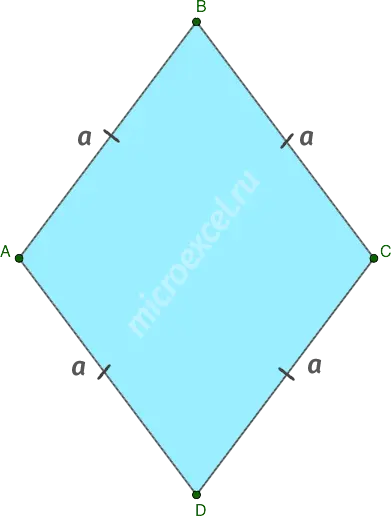
- AB = BC = CD = AD = a
- AB parallel CD, BC parallel AD.
Note: is a special case of a rhombus.
Rhombus Properties
Property 1
Opposite angles of a rhombus are equal to each other, and the sum of adjacent angles is 180°.
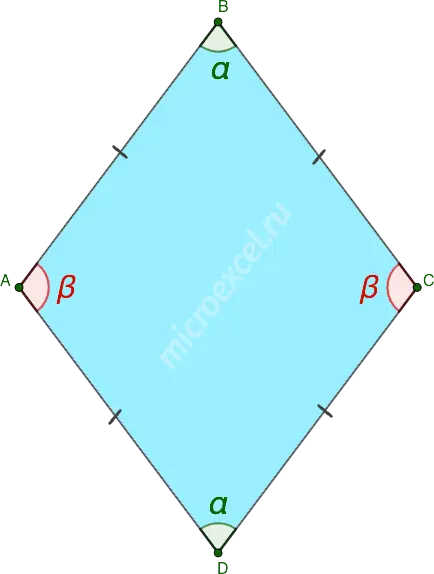
- ∠ABC = ∠ADC, ∠BAD = ∠BCD
- α + β = 180°
Property 2
The diagonals of the rhombus intersect at right angles and bisect at the point of intersection.
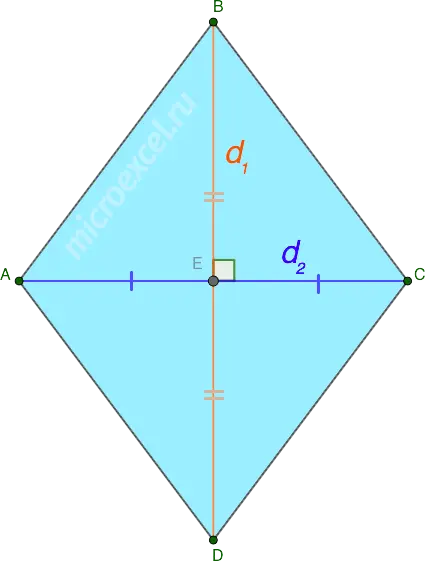
- diagonal BD (d1) perpendicular diagonals AC (d2)
- AE = EC
- BE = ED
As a result of the intersection of the diagonals, the rhombus is divided into 4 right triangles: ΔAEB, ΔBEC, ΔAED и ΔDEC.
Property 3
The diagonals of a rhombus are the bisectors of its angles.
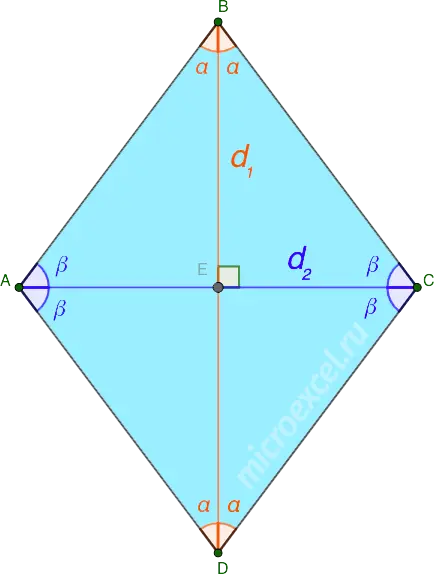
Property 4
Side of a rhombus a can be found through its diagonals d1 и d2 (according to ).

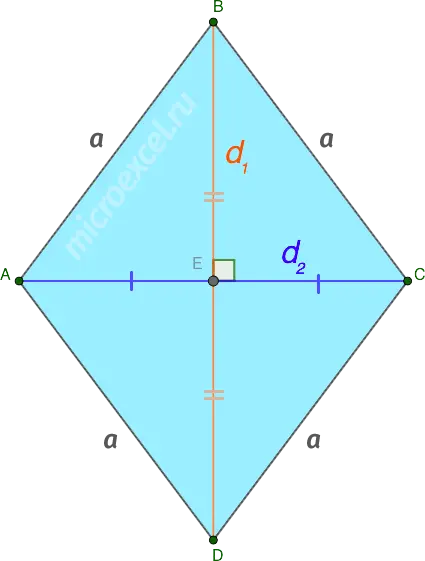
- a – the hypotenuse of any of the 4 right triangles (for example, ΔBEC);
- half diagonals d1 и d2 – legs of triangles.
Property 5
Any rhombus can be inscribed with a circle whose center lies at the intersection of its diagonals.

Radius of a circle inscribed in a rhombus r calculated by the formula:

Signs of a rhombus
A parallelogram is a rhombus only if one of the following statements is true for it:
- Its diagonals intersect at right angles.
- If its diagonals are the bisectors of its angles.
- Two adjacent sides are equal (hence all sides are equal).
Note: Any quadrilateral whose sides are equal is a rhombus.









